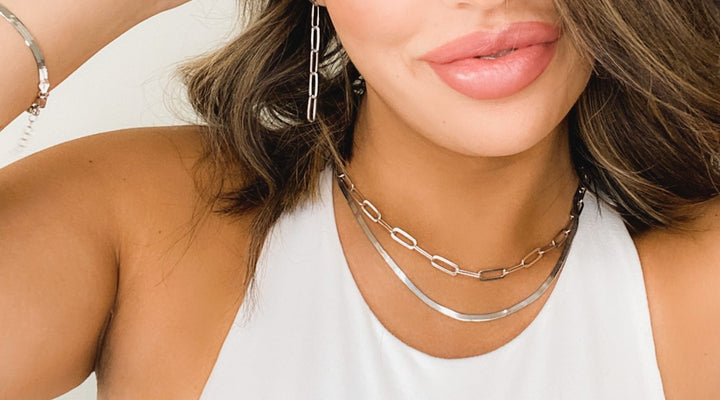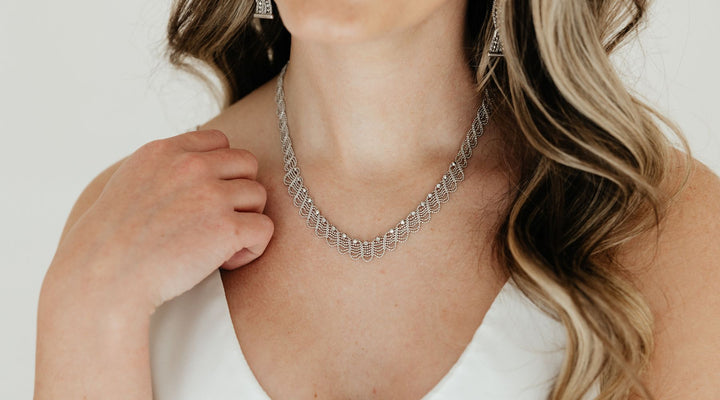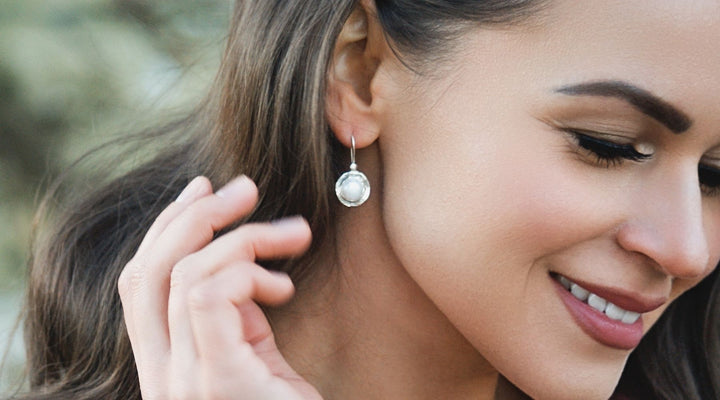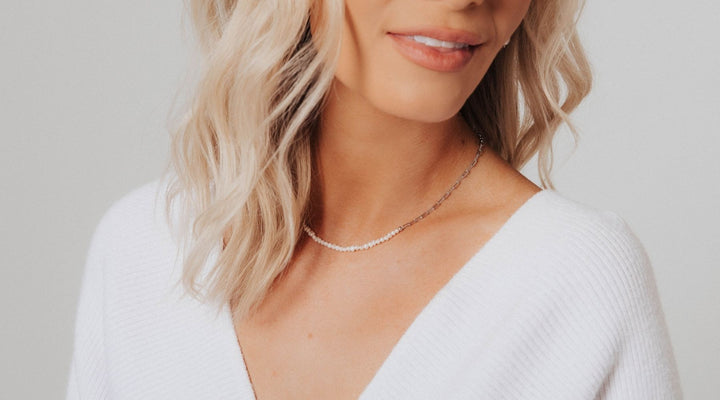Make a Statement with Mystical Red Coral Jewelry
Posted by Deven Davis on
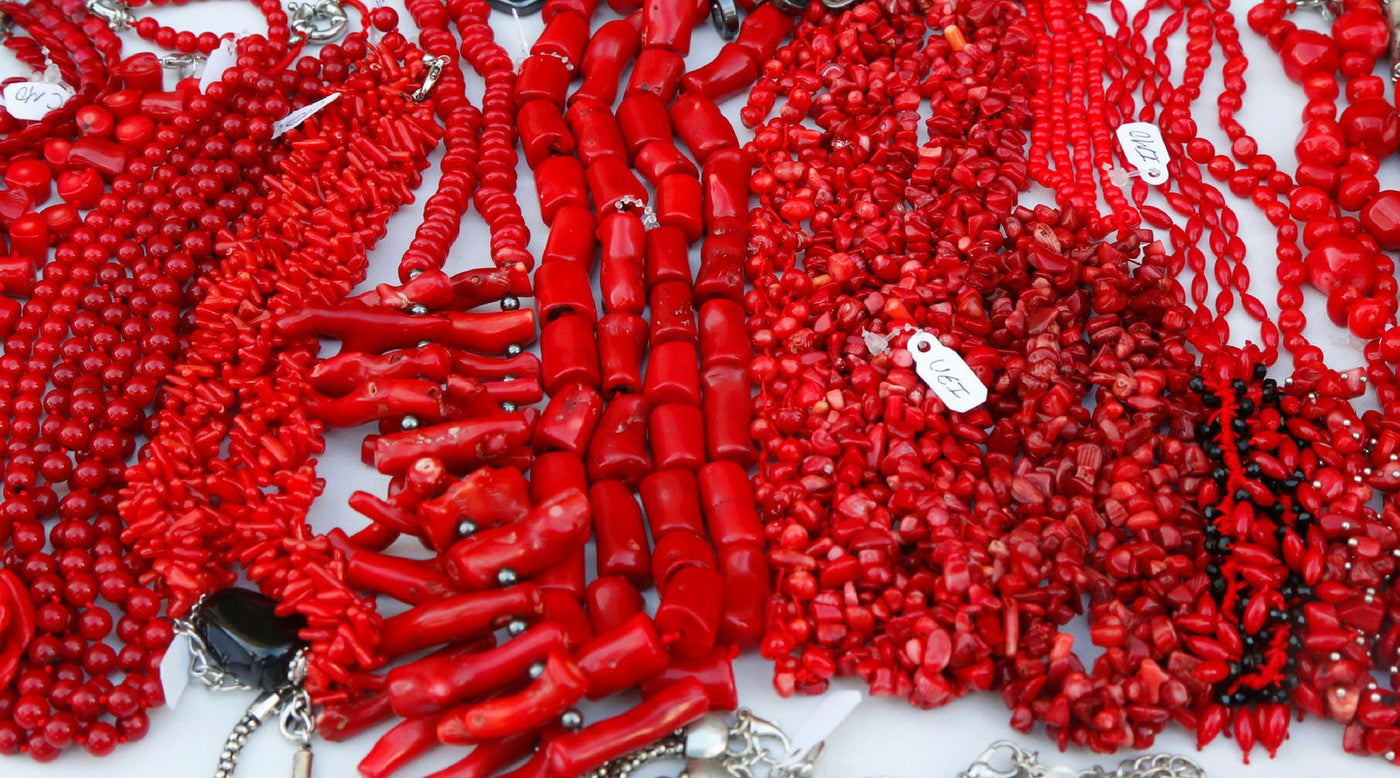
Make a Statement with Mystical Red Coral Jewelry
Red coral jewelry may catch your eye because of its unusual beauty. But did you know there is a right way to wear it? According to tradition, there is. Learn the proper way to make a fashion statement and benefit from the mystical properties of red coral jewelry.
Keyword(s): PKW: red coral SKW: red coral stone, which shape of red coral is best, red coral ring, how to wear red coral, who should not wear red coral
Red coral develops from the skeletons of coral polyps, animals that are no larger than one millimeter. Their skeletons, made of calcium carbonate, stack to form coral. This ancient process is accompanied by ancient traditions.
When you elect to make a statement with this gemstone, you're not only choosing a vibrant color for your jewelry, but you're carrying on those traditions.
Keep reading to learn more about how coral fits into traditions in both Eastern and Western cultures and how to wear red coral.
Red Coral In The East And The West

Coral takes over 100,000 years to grow into something the size of a reef. This soft gemstone grew in popularity because it's easy to shape and carve. The inclusion of coral into myths and traditions logically follows its popularity.
In this section of the guide, we'll talk about those traditions in the East and the West. We'll show you how coral found its way into the heart of these cultures and religions:
- Hinduism
- Ancient Greeks
- Ancient Gauls
- Ancient Romans
- Ancient Egyptians
We'll also show you how the traditional use of coral extended over a thousand years. Before we get to these cultural uses, it's important to understand the benefits of this gemstone.
Benefits
In all of these traditions, this coral is associated with the planet Mars, which is called Mangal in Hindi. Most of the stone's benefits derive from this connection, even where the mythology (as with the Ancient Greeks) diverts from it.
The physical benefits of wearing this gemstone include:
- Increased sexual appetite and appeal
- Healing and reducing the risk of diseases and blood issues or disorders
- Enhanced bone strength
- Increased physical strength
- Preventing miscarriage
The physical benefits of coral are enough to convince anyone to wear it, especially in ancient cultures without the science of medicine. Some of the diseases this coral was reputed to prevent or cure include:
- Piles, or hemorrhoids
- Ulcers
- Fever
- Smallpox
- Typhus
- Rickets
- Stomach aches
- Bruises and cuts
In addition to treating or preventing the above conditions, this coral gem could also warn the wearer of any impending health risks. Supposedly, when the coral varies its color, there is a risk or premonition of impending illness.
Also, this gemstone was thought to help one prevent or recover from snake bites or scorpion stings.
Just as there are physiological benefits, there are also many psychological benefits associated with this gemstone. Many of them deal with helping the wearer to get ahead in life;some offer protection.
- Inspires courage and fortitude
- Makes one vigorous or zealous
- Increases both determination and self-confidence
- Promotes beneficial land and property purchases and sales
- Protects from nightmares
- Protects the wearer from enemies, the evil eye, hexes and curses
Is it any wonder people were clamoring to wear this gemstone with so many benefits? Now that you know about the powers this coral was reputed to have, let's take a look at how its popularity manifested in the cultures, religions, and traditions we mentioned earlier.
Hinduism And The Red Coral Ring
In Hindi, this enchanting gemstone is known as moonga. Coral, especially the red variety, is associated with a great many benefits of the mental and physical nature like those we described above. However, these benefits could only be maximized by completing certain rituals or following certain rules.
For one thing, a ring is more effective than other styles of jewelry in the Hindu tradition, though people do still wear red coral beaded necklaces.
The ring should be worn on the ring finger of the dominant hand. The best results occur when the gemstone is a triangle.
The ring should be worn on Tuesday mornings--unless one's astrologer advises differently. However, wearing coral rings isn't just about sliding it onto your finger before you leave for work. There's a ritual involved.
Wearers should bathe first, facing the east. While bathing, the mantra, "om mangalay namah" is said from 11 to 108 times. Before the ring is worn, it should be dipped or bathed in cow's milk to remove any negativity latent in the gemstone.
The last part of this tradition calls to mind the sacred nature of the cow in Hinduism, combining the religion with astrological traditions.
Perseus And The Ancient Greeks
Perseus, the Ancient Greek demigod and hero who killed Medusa, is responsible--according to this tradition--for the gift of red coral.
Medusa and her sisters were turned into gorgons for her denial of Poseidon, the god of the sea. Gorgons were monsters with snakes for hair whose stare could turn men to stone.
Perseus uses his reflective shield to defeat Medusa without having to look at her or meet her gaze. He beheads her. In most retellings of this myth, Pegasus, the winged horse, flies out of her mortal wound and goes on to enjoy a career of flying magic thunderbolts up to the top of Mount Olympos for Zeus.
But other tellings of the myth continue to say that when Perseus discarded Medusa's head into the sea, her blood turned into red seaweed which became coral. Perhaps this was the basis for the idea that this gemstone could heal snake bites.
While We're Talking Shields...
Perseus isn't the only one whose shield is connected to this crimson gemstone. The ancient Gauls were known to use this coral in their own shields, helmets, and weapons. Supposedly, this was to grant them courage on the battle field.
But there's probably a fiscal reason too. By attaching their precious gemstones and jewels to their weapons and shields, they carried them with them.
Ancient Romans And Egyptians
In Ancient Rome and Egypt, parents were known for hanging beads of this coral around their children's necks. The main purpose was for protection. Pliny the Elder, a famous Ancient Roman scholar, recommended people wear this coral to fend off those who would tempt them.
Of course, if people also wore this jewelry to show of their wealth, we're not really certain how effective it would be in warding off anyone intent on tempting the wearer.
Victorians And Superstition
The Victorian age is known for many things, including steam engines, smog, high collars, euphemism, and superstition. It's the latter that had them reviving or continuing ancient traditions of using a red coral stone to keep danger at bay.
From necklaces to coral earrings, they believed in the protective powers of this gemstone. They believed in those powers so much that like the Ancient Romans and Ancient Egyptians, they insisted on their children wearing this beautiful coral.
Now that you know about the benefits of this coral, as well as the history and mythology of the traditions concerning its wear and use, we'll move on to who should wear it and what you should look for in your red coral.
Who Should And Who Should Not Wear Red Coral
So you're ready to buy and wear some coral. Not so fast! - there are people who coral helps, and others who are hindered by this crimson gem. There are two sets of guidelines you can follow, one based on your zodiac sign and one based on your profession.
Professionals Helped By Red Coral
To determine which types of professions are aided by this gem, one needs to think about the benefits it offers.
Jobs that require physical strength and stamina can benefit from the use of this gemstone. Some examples include:
- Athletes
- Police officers
- Soldiers
Another group includes those who are required to do precise work, like:
- Surgeons
- Manufacturers
- Electricians
Finally, professionals who are required to rely on self-confidence, leadership, or navigational skills can benefit from Mars' influence:
- Politicians
- Pilots and sailors
- Entertainers
These three groups are not the be-all, end-all. There are other professions that can be helped by wearing this gemstone, but these nine are the most common. Wearers can check with their personal astrologers for more personalized advice.
Using The Zodiac As A Guide
Because the zodiac relies on the positions of stars and celestial bodies, your zodiac sign can help you determine if you should or should not wear red coral. In layman's terms, this basically comes down to how Mars influences--or is influenced by--your zodiac sign.
Some signs can always wear this gemstone for beneficial results:
- Aries
- Pisces
- Scorpio
- Cancer
- Leo
- Sagittarius
Those born under these signs share an auspicious connection to Mars which is, according to tradition, amplified by wearing red coral. For those born under some other zodiac signs, wearing this gemstone can not only prevent good fortune, but it can welcome bad fortune. Tradition suggests those signs are:
- Libra
- Gemini
- Virgo
You might look over these last two lists and count only nine zodiac signs. That's because for the remaining three--Aquarius, Capricorn, and Taurus--wearing this gemstone can be beneficial at certain times. Likewise, wearing the gem can be harmful at other times.
Again, this all comes down to when Mars influences these signs. You should check with a trusted astrologer if you're curious about when the planet influences your sign.
How To Wear Coral
Even if you're not a member of the traditions we previously discussed, there are things you should know about wearing this gemstone. These factors are based on both tradition and quality.
These beautiful gemstones, which range from pink to red, come from many parts of the world. Nations that are known for producing this coral include:
- Sri Lanka
- Burma
- India
- Pakistan
- Japan
- Australia
- Malaysia
- Algeria
- Italy
- Spain
- France
- Afghanistan
- South Africa
- America
- Brazil
Of these, Sri Lankan red coral is known as being uncommonly high-quality. It's famed for its gleam and color, and the price of the gemstones will reflect that. However, whether for aesthetics or astrology, you get what you pay for.
How To Pick Out High-Quality Coral
How do you know if the piece of coral you're about to buy is of a good quality? For one thing, the color shouldn't be too dark. Similarly, it shouldn't be too bright or vivid.
The stone should be free from scratches. This is important, especially as it's such a soft gemstone. Likewise, the coral shouldn't have too many inclusions.
An inclusion looks like a patch of a different color. An inclusion is actually a growth of other minerals or crystals in spaces within the gemstone. While some inclusions indicate that it's real, natural coral, too many inclusions could indicate a weak piece that might fall apart in the future.
Look at the coral piece under a magnifying glass if you can. If you notice bubbles in the gemstone, it's not the best quality. Smudges in the stone indicate lower quality as well.
Finally, how the gemstone changes temperature can tell you of its genuine quality. If it warms or becomes hot in your hand after a few minutes, know that there are higher-quality coral pieces you can find.
If you don't want to have to worry about quality, seek out a seller of gemstones reputed for quality. For astrological reasons, your gemstone should be set in gold, copper, or silver--like this coral pendant. These metals help you make the most of the gifts from Mars.
Bonus Tip: Caring For Coral
According to tradition, if you want to get the most benefit out of your coral piece of jewelry, you need to keep it clean. Because coral is so soft, you want to avoid any abrasive materials or harsh chemicals.
In fact, the best way to clean your coral is with soapy water and a soft brush, like a spare toothbrush from the dentist. This will help keep your piece clear of dirt and dust, which muffle the benefits from Mars.
Conclusion
Regardless of your reason for choosing coral jewelry, you can count on one thing: its beauty. Red coral will make a statement wherever you go. If you have questions about coral jewelry or coral settings, or how you can add ageless beauty and fascination to your look, contact us.













